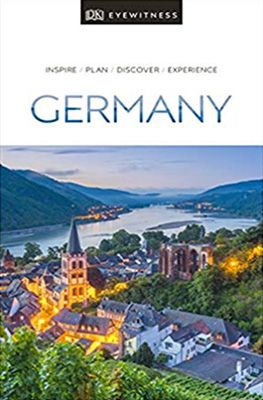The beautiful city of Lübeck on the Baltic Sea is an ideal stopover when travelling to Scandinavia. Indeed, as a Hanseatic city, Lübeck was prosperous in the Middle Ages. The many splendid buildings in the city centre are reminders of that flourishing period. It’s no wonder that the “Altstadt” (Old Town) has been on the UNESCO World Heritage list since 1987. Walking through the medieval streets, the many mansions and buildings in characteristic brick Gothic immediately stand out. As do the seven imposing church towers that dominate the skyline. In this blog, we’ll guide you through the main highlights of the Hanseatic city of Lübeck. So you can fully enjoy your city trip to this extraordinary place.
In this blog ...
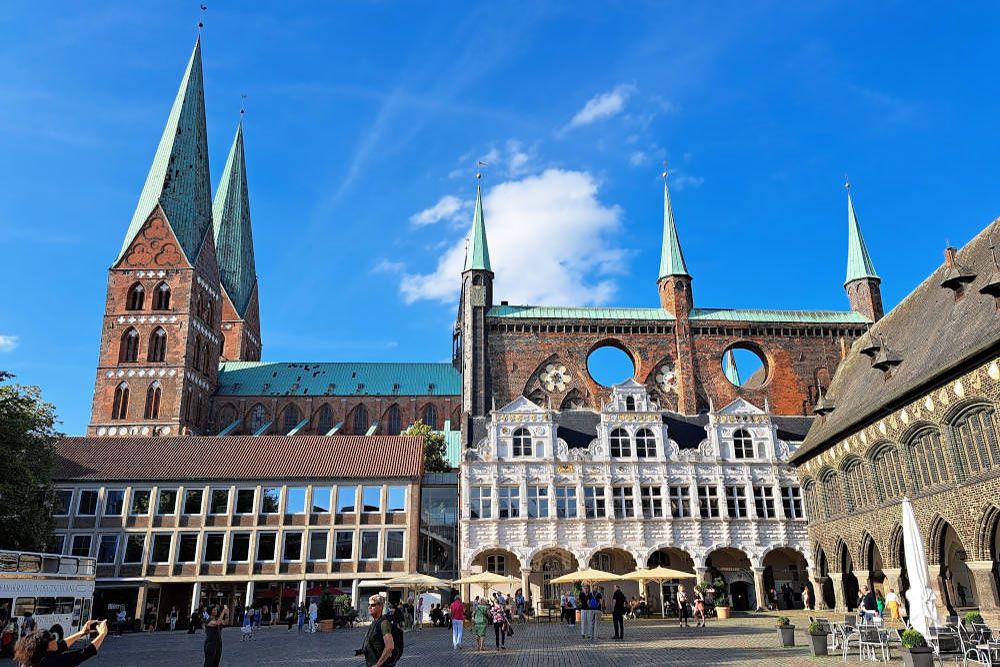
History of the Hanseatic city of Lübeck
Although Lübeck had existed for a few centuries, its great period of prosperity came after 1143. In the second half of the 12th century, trade with Gotland gave the city a boost. The city played an important role in the formation of the Hanseatic League, a cooperative of merchants and cities in the Middle Ages. The German Hanse was the largest, with Lübeck as its hub. It’s no coincidence that Lübeck was known as the “Queen of the Hanse”. The city primarily traded with Denmark, Belgium, England and Russia. This led to great prosperity. In the 16th century, the Hanseatic League fell apart, despite Lübeck’s desperate attempts to prevent this.
In World War II, Lübeck suffered heavily from Allied bombings. Fortunately, compared to other German cities, only part of the inner city was destroyed. After the war, the centre was beautifully restored. This gives us the chance to enjoy the many highlights of Lübeck.
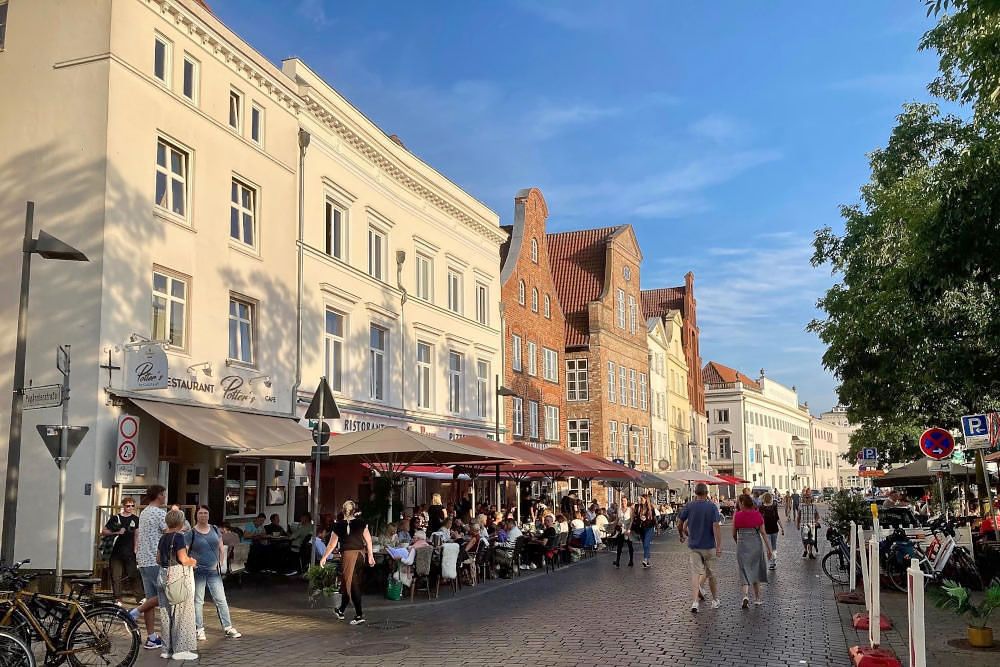
Highlights of the Hanseatic city of Lübeck
The historic city centre is located on an island. All sights can be easily reached on foot. We’ll guide you through the main highlights of the Hanseatic city of Lübeck.
Holstentor
Begin your walking tour of Lübeck at the Holstentor. This large city gate from the 15th century is the city’s main attraction. Many consider the Holstentor to be one of the most beautiful buildings in Germany. In the 15th century, the city gate was built as part of the fortifications. Due to the city’s prosperity, it was an attractive target for enemy troops. Little remains of the fortifications and city gates. Fortunately, the Holstentor has been preserved. As has the Burgtor on the north side of the city, although it is less impressive than the beautiful Holstentor. Inside, there’s an exhibition on the theme “the power of trade”. There you can learn more about the Hanseatic League, Lübeck as a trading city, and the history of the city gate.
 |
The tourist information centre is also close to the Holstentor. Ideal for finding information about Lübeck’s highlights, a city map, a guided walking tour or other practical tips. |
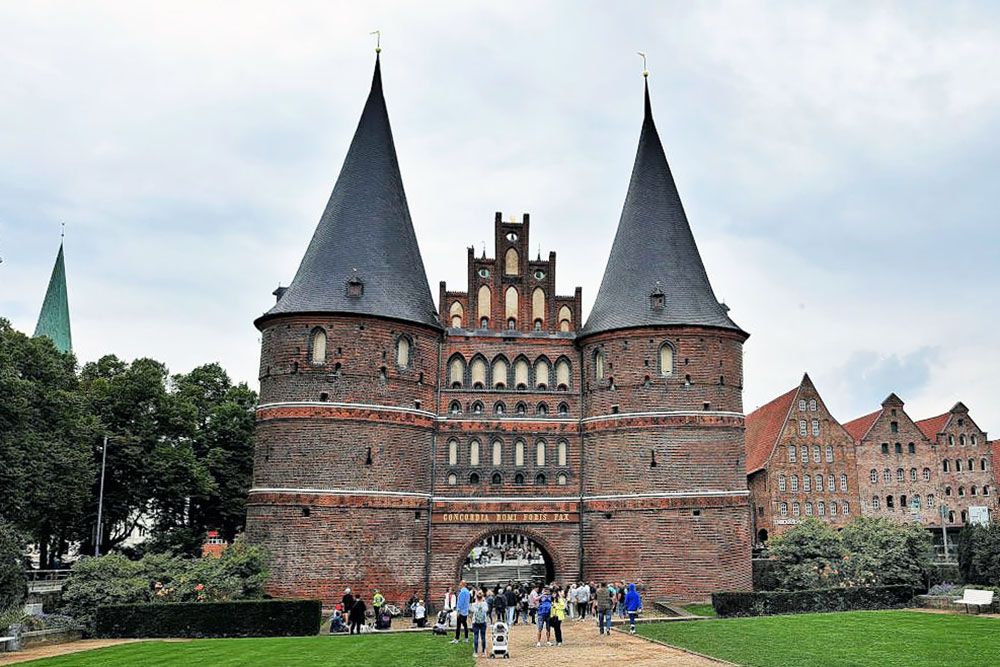
Salzspeicher
Just a few steps away from the Holstentor are the beautiful brick salt warehouses from the 16th century. Salt was an important trade product for Lübeck. The salt was extracted from a salt mine near Lüneburg. It was transported by water to the salt warehouses and stored. The salt was sold to various countries, where it was used to preserve food. Later, the warehouses were used to store other goods.
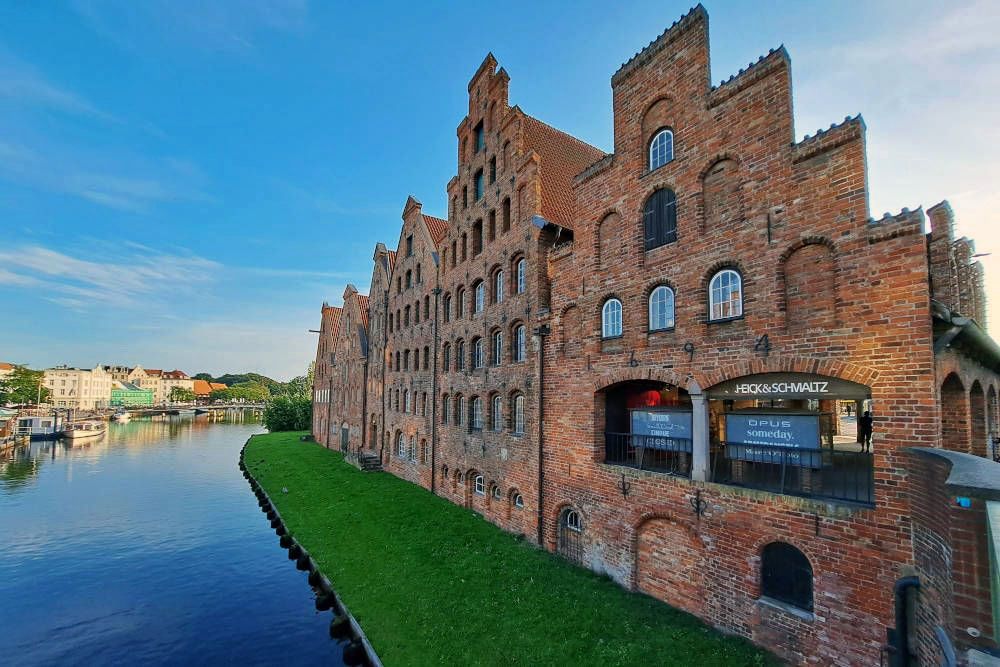
Rathaus
Lübeck’s town hall is an excellent example of North German brick Gothic. The building is considered one of the country’s most important non-ecclesiastical monuments. The façade, made of glazed brick, is striking. An expensive product, but Lübeck was well-off at that time. Construction began in the 13th century. After about a century, the building was completed. In later centuries, the town hall was renovated and expanded. This can be seen in the different architectural styles. The loggia from 1572, the council and audience hall, and the citizenship hall are beautiful. Guided tours of the town hall are available at set times. This gives you the chance to enjoy the splendour of the various halls.
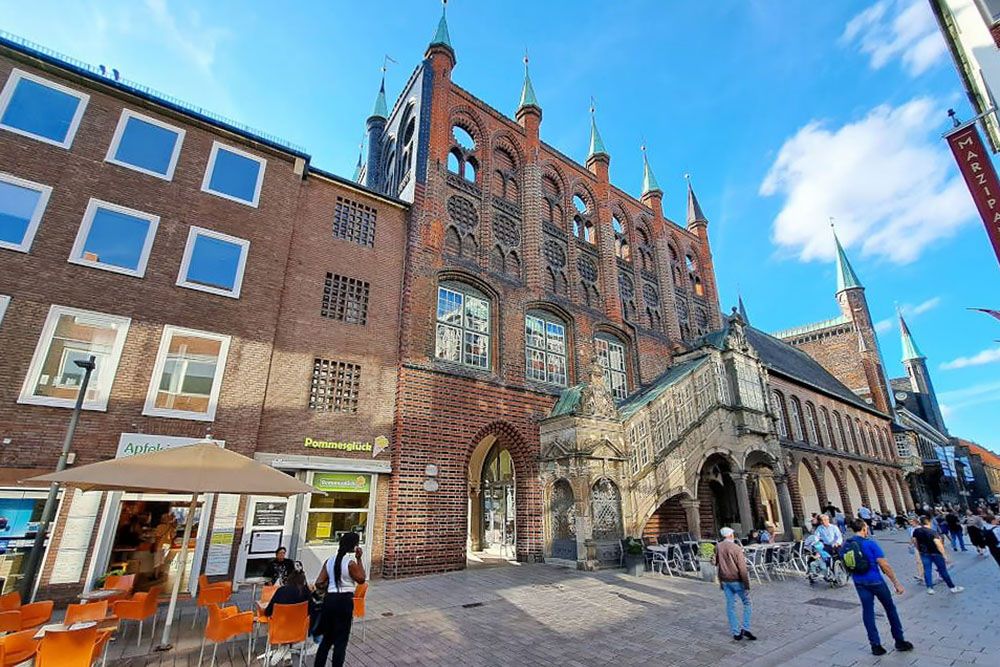
Churches
The seven spires that define Lübeck’s skyline belong to five churches. One of these is St. Peter’s Church. A visit to St. Peter’s Church is a must due to the viewing point at 50 metres high. You go up by lift. There you can enjoy a fantastic panorama over the city.
In our opinion, the most beautiful church in the city is St. Mary’s Church. The brick basilica is a prime example of Baltic brick Gothic. Both from the outside and inside, the church’s impressive architecture stands out. Highlights include the many depictions of the Dance of Death, the unique astronomical clock, the impressive altar, and the chapel with the clock that crashed down in 1942. We also found the abundance of modern art in the church fascinating. It gave a special dimension to this building. In front of the church stands the statue of The Devil’s Stone. According to legend, the devil tried to use a stone to prevent the construction of the church. Fortunately, his attempt failed. So we can enjoy a beautiful structure that is certainly one of the highlights of the Hanseatic city of Lübeck.
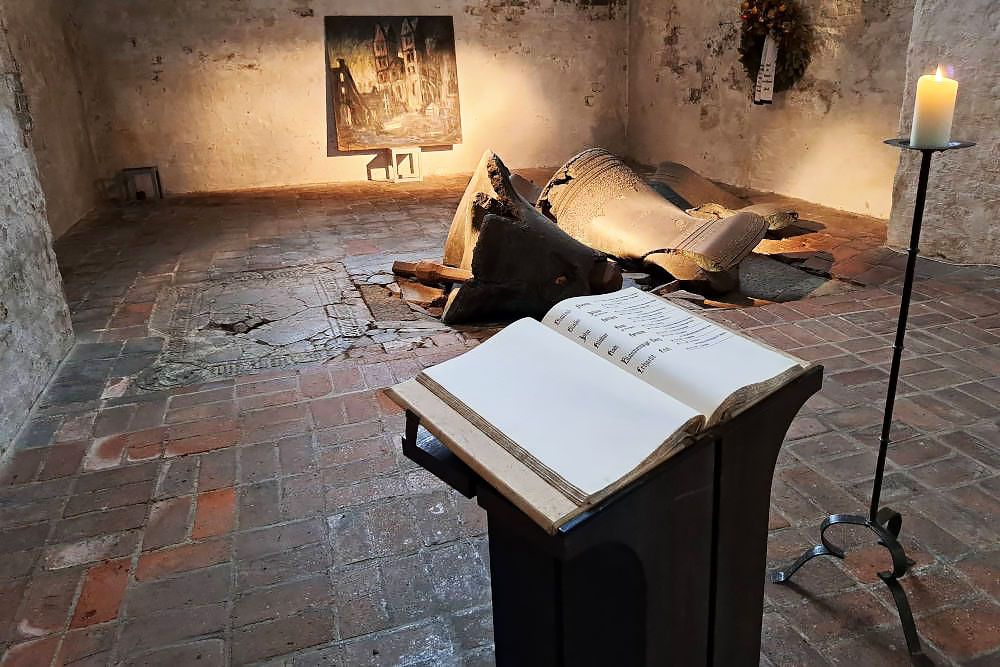
Heiligen-Geist-Hospital
Although Lübeck was a prosperous city in the Middle Ages, there were also poor and sick people in the city. These people depended on the help of the wealthy. Thus, in 1286, the Heiligen-Geist-Hospital (Holy Spirit Hospital) was established. The building is one of the most important monumental buildings in brick Gothic. Notable features are the façade with three pointed gables and four slender turrets, the beautiful church hall, and the nave where the beds of the needy were set up. Later, small wooden rooms were made in this space. These were used until the 1960s. Be sure to walk around the building to enjoy the idyllic garden. A sense of blissful tranquillity will overcome you there.
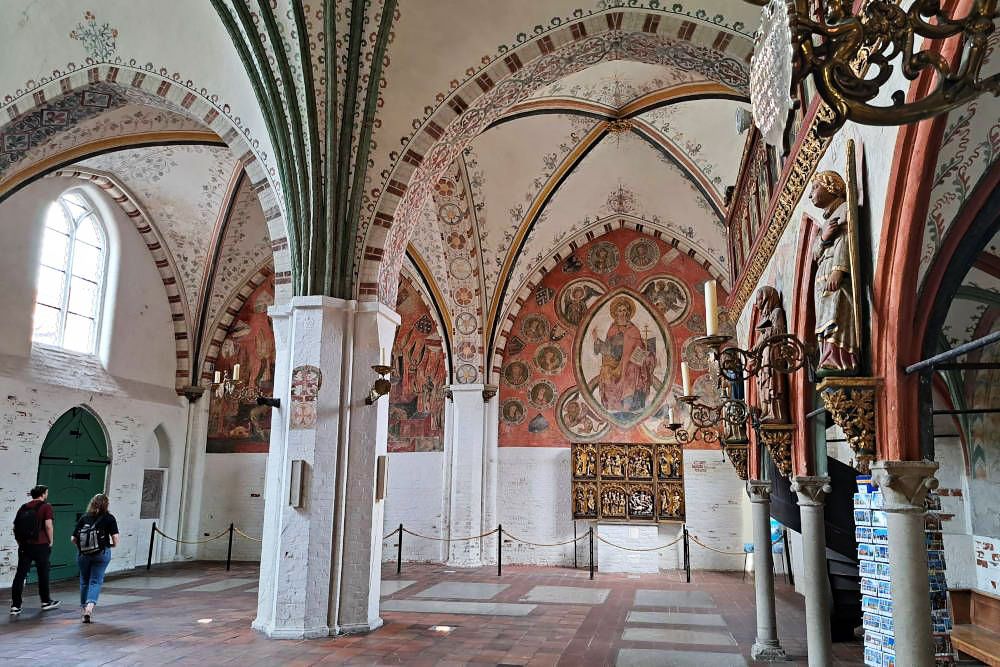
Alleys and Courtyards
The old city centre of Lübeck is a large labyrinth of alleys and courtyards. Behind the brick façades lie green oases. The small dwellings originated during the time when trade flourished. Living space was scarce in that period. Narrow alleys were created with small houses, often even without windows. Several courtyards have survived in the city centre. Now these courtyards are a delightful resting place in the city, with charming houses and beautiful gardens. In Glockengießerstraße, you’ll find two of these beautiful courtyards close together: the Fuchtingshof and the Glandorps Hof. Do take a look in these courtyards, but respect the privacy of the residents.
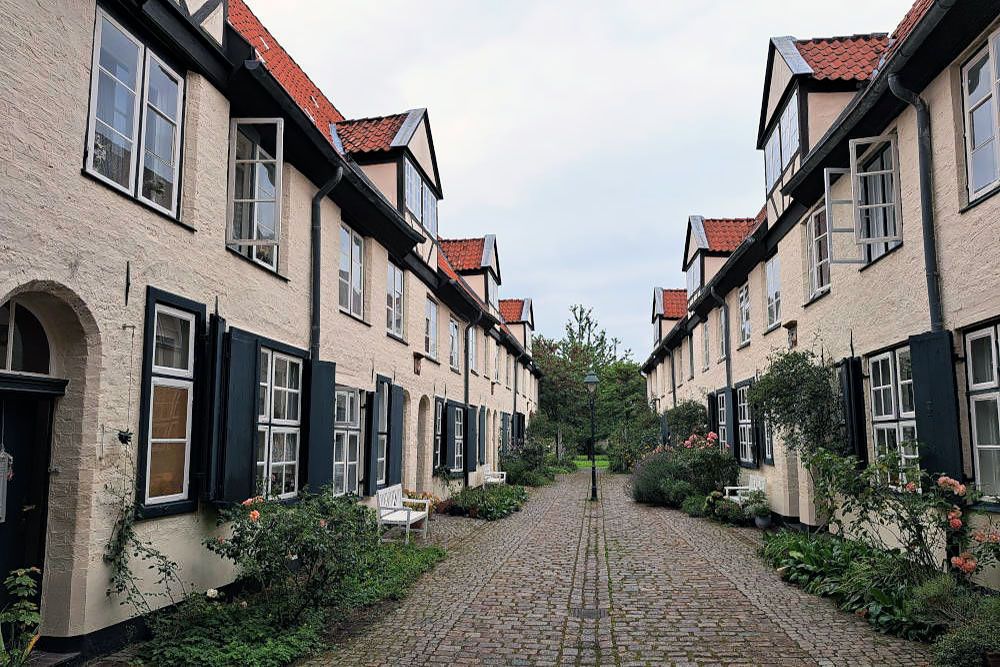
Indulging in Marzipan at Café Niederegger
Lübeck’s marzipan is world-famous. According to stories, this sweet treat was invented here in the early 15th century to combat famine. However, it’s more likely that trade with distant lands brought Lübeck into contact with marzipan. In the 19th century, the city had several companies that manufactured marzipan. One of these was the Niederegger company. At Café Niederegger, you can indulge in delicious marzipan creations. You can also buy all sorts of items to take home. Above the café is a real Marzipan Museum, even featuring life-size marzipan figures.
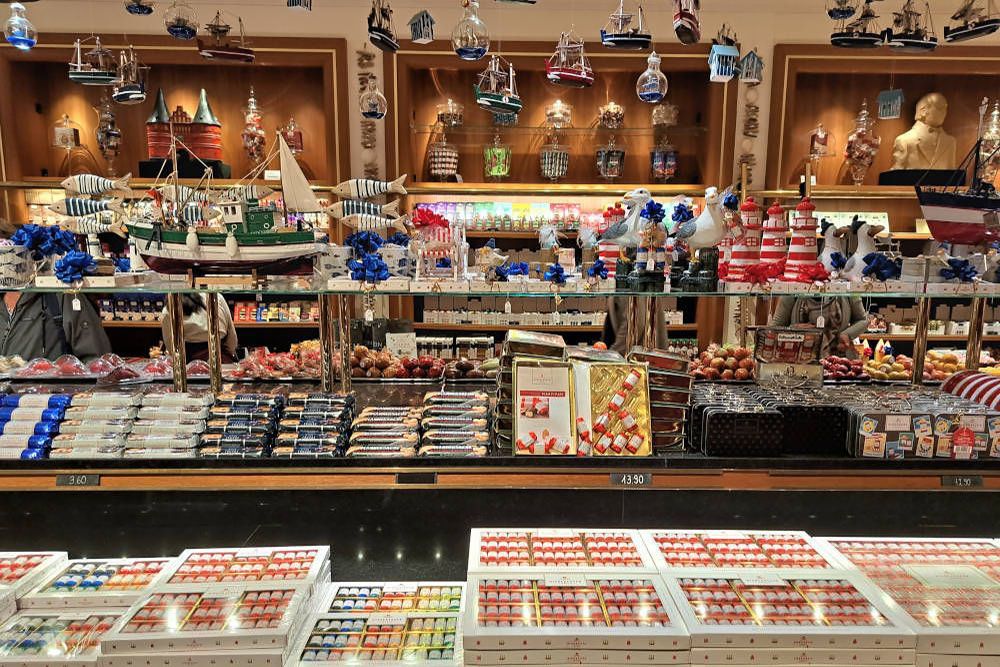
Museums in Lübeck
Culture enthusiasts will be thoroughly satisfied in Lübeck. Despite the historical city centre not being large, there are many museums.
Two important writers lived in the city, Thomas Mann and Günter Grass. Both have won the Nobel Prize for Literature. The Buddenbrookhaus is the museum about Thomas Mann and his life’s work, Buddenbrooks (temporarily closed, there is a small exhibition in a branch due to renovation). The Günter Grass-Haus highlights the work of the author of, among others, “The Tin Drum”.
Another famous resident of Lübeck was Willy Brandt. A German politician who became Chancellor and worked towards European political cooperation and unification. For this, he received the Nobel Peace Prize. The Willy-Brandt-Haus illuminates his life and his role in national and international politics.
Those interested in Lübeck’s Hanseatic past and the development of the Hanseatic League should not miss the European Hanseatic Museum. The interactive museum primarily focuses on the development of trade from Lübeck to Russia. It also addresses the important position the city held in the Hanseatic League.
Museum Behnhaus Drägerhaus is housed in two 18th-century city palaces. The museum has a large collection of paintings, sculptures and decorations from the 19th and 20th centuries.
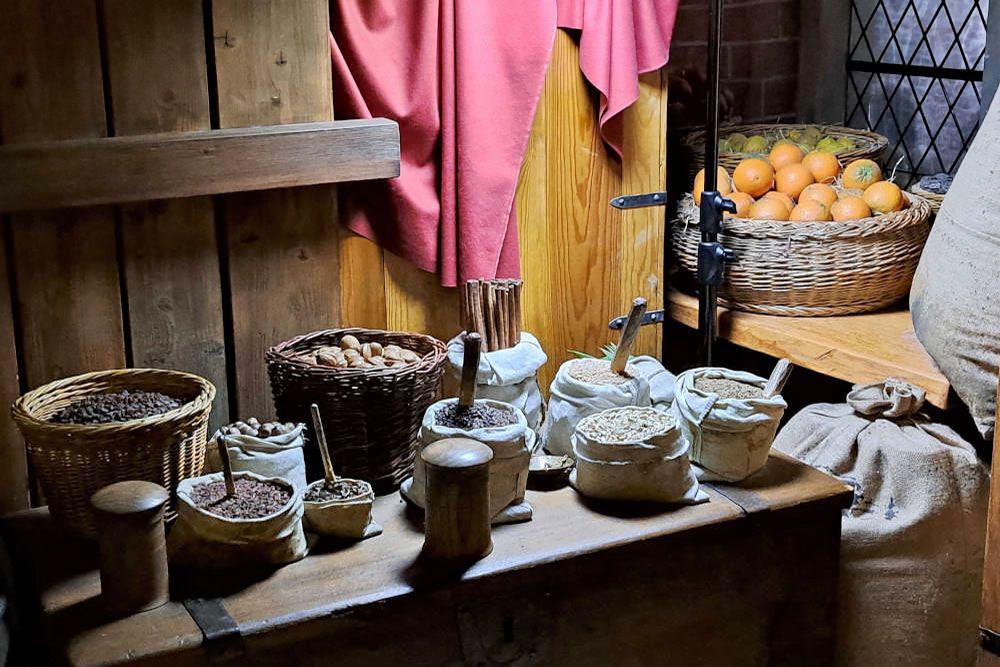
Schiffergesellschaft
The guild for sea and merchant men owned a guild house in the centre of Lübeck, the Schiffergesellschaft. The guild operated an inn. Additionally, the guild cared for their members and their families in need. There were sleeping places for the poor members. The Schiffergesellschaft is still an inn where you can enjoy authentic seafarer’s dishes in an authentic ambiance. In the building, the coats of arms of the sailors stand out, right by the benches. Thus, everyone had their fixed place in the Schiffergesellschaft.
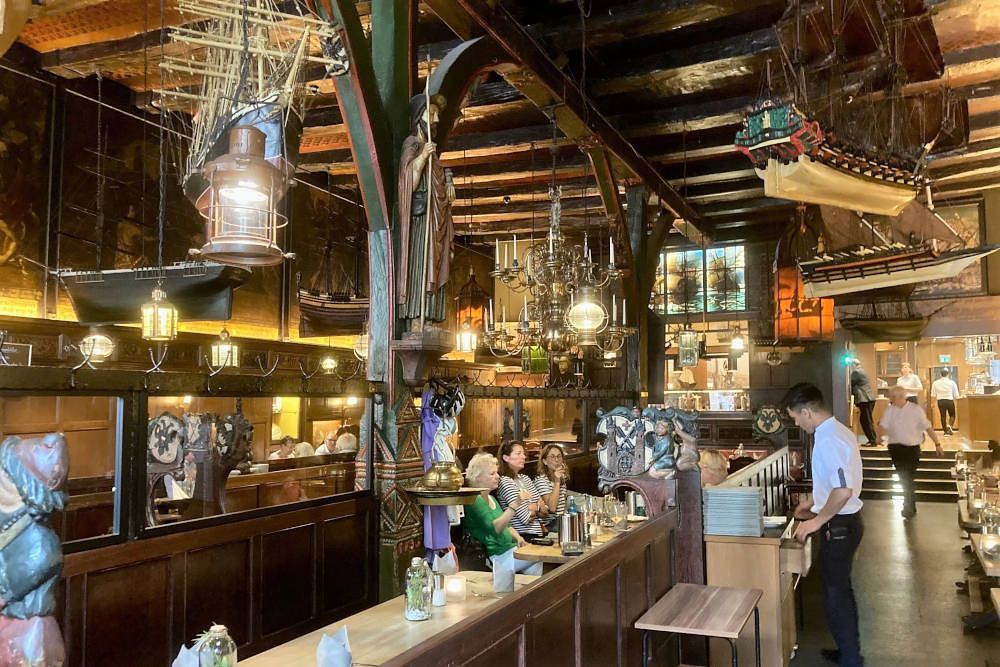
Walking along the highlights of Hanseatic city of Lübeck
We visited all the highlights of Lübeck on foot. A very handy tool for this was the city map. It shows a “city tour” (Stadtrundgang). If you follow it, you’ll pass all the sights described above. An ideal way to discover the historic city centre of Lübeck on foot. In our opinion, the most enjoyable streets to walk through are Hüxstraße and Glockengießerstraße. In these streets, you’ll find nice shops, cosy coffee houses, intimate courtyards and many beautiful buildings.
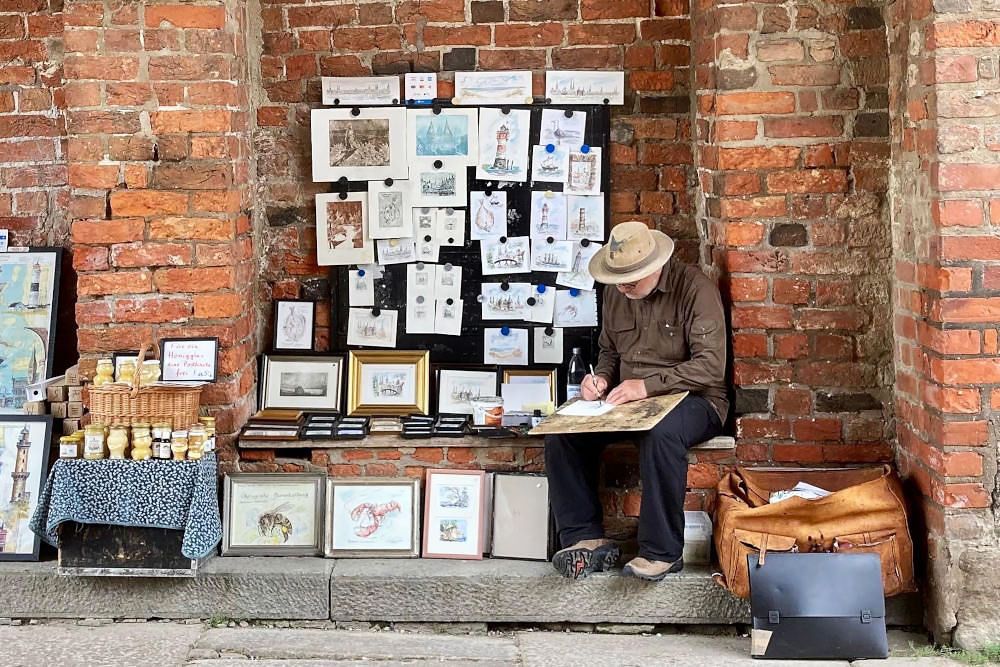
Visiting the highlights of Hanseatic city of Lübeck with a guide
If you want more background information about the city, its history, buildings and the most important residents of Lübeck, then a guided tour is ideal. This way, you’ll get to know Lübeck even better. The Lübeck Tourist Office offers various city tours. You can find a complete overview on this page.
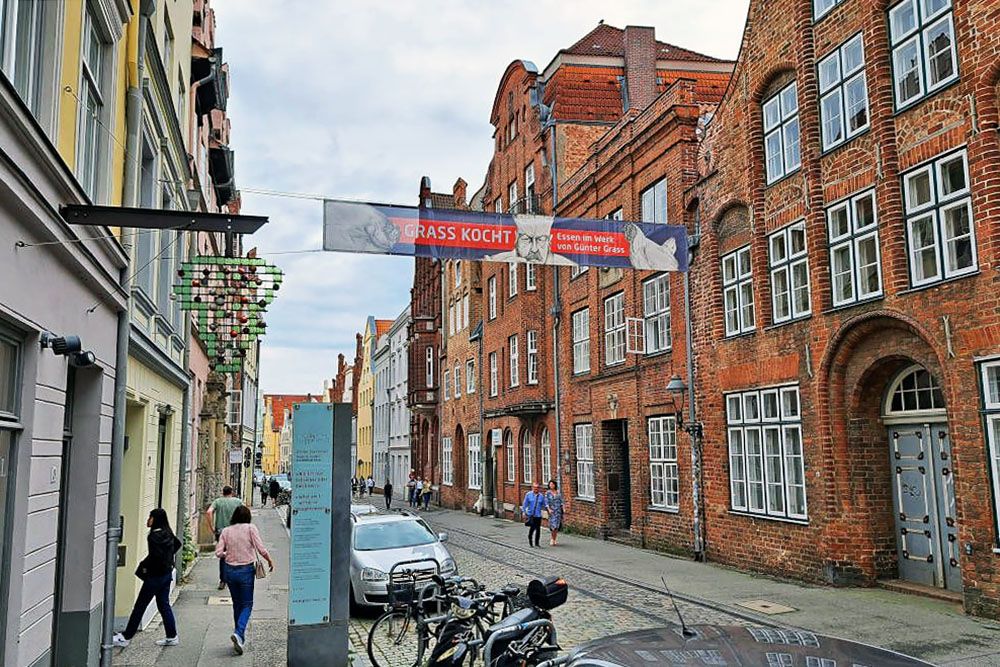
FAQs about a visit to the Hanseatic city of Lübeck
Lübeck is located in northern Germany. The city is about 70 kilometres northeast of Hamburg. The Baltic Sea is not far from Lübeck.
The entire historic city centre is a sight in itself. It's no coincidence that Lübeck's "Altstadt" has been on the UNESCO World Heritage list since 1987. As the "Queen of the Hanseatic League", the city had a prosperous past. Beautiful monuments are the lasting proof of this. The famous brick Gothic can be found in many buildings. Some highlights are the city gate Holstentor, the salt warehouses Salzspeicher, St. Mary's Church and the many alleys and courtyards in the historic city centre.
Certainly, you can have an excellent weekend in this Hanseatic city. Along the banks of the Trave, you'll find many restaurants with pleasant terraces. Additionally, Lübeck's marzipan is a world-famous delicacy. And thanks to the flourishing trade in the Middle Ages, the city is full of beautiful buildings and warehouses. After all, the entire city centre of Lübeck is a UNESCO World Heritage site.
If you want to have breakfast in the city, Hüxstraße is a street where you'll find cosy breakfast spots. Such as Kaffeehaus-Lubeck, for example. It's a small place, so it fills up quickly. Café Niederegger is also a nice place for breakfast.
In nice weather, it's a delight to sit on one of the many terraces on the quay of the Trave opposite the salt warehouses. You can go there not only for a drink but also for dinner. Don't expect haute cuisine, but the ambiance makes up for a lot.
Good restaurants in Lübeck are:
We stayed to our full satisfaction in a spacious Airbnb accommodation in a stylish building near the centre. In a few minutes, we walked into the historic city centre. We could park our car for free in the neighbourhood.
Other good accommodations are:
Is your choice not among these? Then take a look at the complete overview of accommodations in Lübeck.


